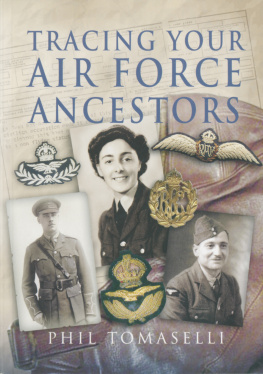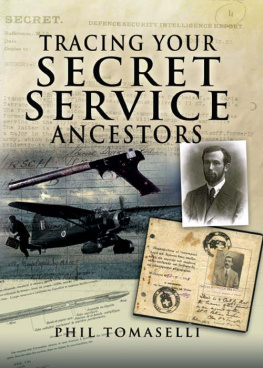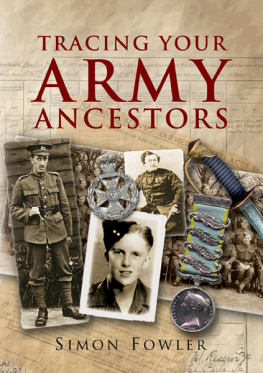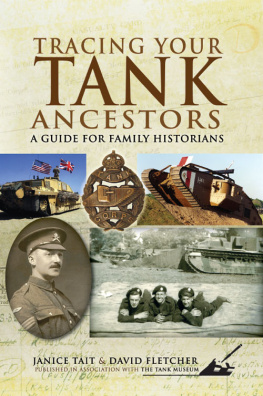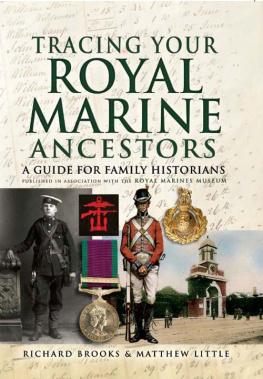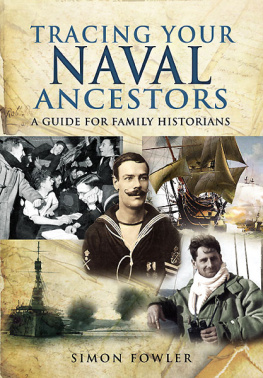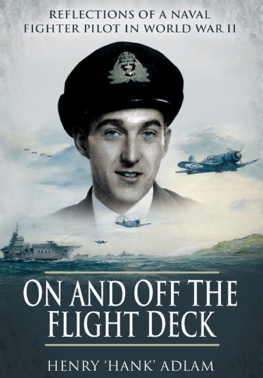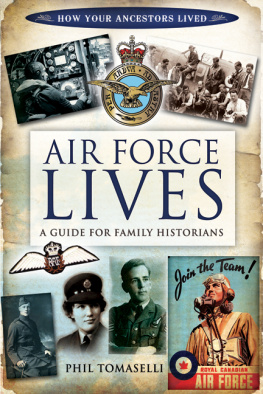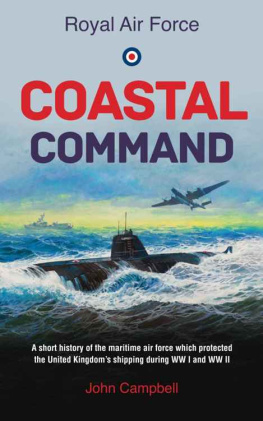TRACING YOUR
AIR FORCE
ANCESTORS
TRACING YOUR
AIR FORCE
ANCESTORS
P h i l T o m a s e l l i
First published in Great Britain in 2007 by
PEN & SWORD FAMILY HISTORY
an imprint of
Pen & Sword Books Ltd
47 Church Street
Barnsley
South Yorkshire
S70 2AS
Copyright Phil Tomaselli 2007
ISBN 978 1 84415 573 6
The right of Phil Tomaselli to be identified as Author of this Work has been
asserted by him in accordance with the Copyright,
Designs and Patents Act 1988.
A CIP catalogue record for this book is
available from the British Library.
All rights reserved. No part of this book may be reproduced or transmitted in any form or
by any means, electronic or mechanical including photocopying, recording or by any
information storage and retrieval system, without permission from the Publisher in
writing.
Typeset in Palatino and Optima by
Phoenix Typesetting, Auldgirth, Dumfriesshire
Printed and bound in England by
CPI UK
Pen & Sword Books Ltd incorporates the Imprints of
Pen & Sword Aviation, Pen & Sword Maritime, Pen & Sword Military,
Wharncliffe Local History, Pen & Sword Select, Pen & Sword Military Classics
and Leo Cooper.
For a complete list of Pen & Sword titles please contact
PEN & SWORD BOOKS LIMITED
47 Church Street, Barnsley, South Yorkshire, S70 2AS, England
E-mail: enquiries@pen-and-sword.co.uk
Website: www.pen-and-sword.co.uk
CONTENTS
ACKNOWLEDGEMENTS
F irst and foremost I owe my wife, Francine, the warmest and most heartfelt thanks for living with this interest for longer than weve been married and for putting up with my regular visits to TNA and other archives. I also owe a large debt to her late father, Peter Pepper, whose own knowledge of aircraft dwarfed my own, and who was a most useful mentor, guide and inspiration.
The staff at The National Archives have always been helpful, courteous, kind and knowledgeable. Simon Fowler, previously editor of Family History Monthly and now Ancestors, adopted me early on and has encouraged me (and acted as editor) ever since. Rosemary Horrell loaned me, and allowed me to copy, the papers of her late stepfather, Group Captain Reggie Bone, in the first place and got me started on the whole project.
Swindon and Marlborough Library staff have been patient in searching out obscure books for me through the inter-library loan service. Jan Keohane, Catherine Rounsfell and Duncan Black at the Fleet Air Arm Museum allowed me access to the extensive archives there and offered me advice, assistance and some good laughs and gossip while I was there. Martin Kender shared with me his researches into Lt Guy. Various friends in the Western Front Association and Cross and Cockade International have shared their interests and enthusiasms with me; David List, Paul Baillie and William Spencer and other researchers at TNA have given me advice, help and support over many years. Richard Davies and his assistants at Leeds University Library helped me with the Liddle Archive and kindly provided the photograph of C P O Bartlett. Thanks to the staff of the RAF Museum, Imperial War Museum and Museum of Army Flying; Nick and Carmen Coombs for information on, and the photograph of, Nicks grandfather Reginald Heath; Joyce Cooke for the photographs of the late Ron Cooke and for permission to use his log book.
Various veterans of the First World War and later who Ive been in touch with deserve special mention, particularly Guy Blampied, William Savage and John McGowan. Now all passed away but each, in their own way, was keen to help me in various aspects of my researches.
My father Phil Tomaselli senior did his National Service in the RAF in the early 1960s and has encouraged me and talked me through his service record (as well as producing his own history of RAF Yatesbury to act as a spur). Finally, Id like to dedicate this book to my late mother, Doreen Tomaselli, who from an early age said that I should be a writer and researcher and who lived to see my first articles published. She would have been delighted to see my name on this book.
A t the height of Second World War some 110,000 officers and 1,050,000 other ranks were serving in the Royal Air Force, with many thousands of others in related air services such as the Fleet Air Arm, Glider Pilot Regiment and the Armys Air Observation Posts. Given that there were some 300,000 men and women in the Royal Air Force at its formation on 1 April 1918 and that the origins of British military aviation go back to the 1870s, very many of us have ancestors who flew for their country or supported the men who did.
My own interest in the RAF began in the 1980s when I was given the papers of Group Captain Reginald Bone, whod served with the Royal Naval Air Service and then the RAF (with a short gap, when he was Director of Civil Aviation in Egypt) until 1941. There wasnt then (or if there was I couldnt find it) a general guide to RAF records, and service records from the First World War had not been released, so researching what I hoped to turn into Reggies biography was challenging to someone whose main interest, previously, had been the Victorian army. But it was fun and the interest in the RAF and in service records and archives has stayed with me ever since. I hope this book will provide information about how to find information about individuals but also give pointers and examples to researchers (particularly family historians) about where they can find records of units and bases individuals served in, the kind of work they did, the aeroplanes they worked with and the people they worked alongside.
Family history, if it is to mean anything, means taking individuals and understanding their world. History isnt just created by kings, politicians and air marshals but by the men and women who actually did the fighting in the air, the servicing of the aircraft on the ground, who drove the fuel bowsers, moved the aircraft symbols on the plotting tables, manned the telephone exchanges and typed the orders. Without them and their sacrifices of time, effort and sometimes health or lives, no great events would be possible. I hope this book will help you fit your ancestor into the events in which they participated.
Inevitably, when seeking an individual, youll find some records have been destroyed, mislaid, not been released or have been so indexed that their title gives no hint that useful information is contained inside. Persevere, think laterally, try looking further up the command chain for copies of documents that might be relevant, seek out other collections. The simple act of researching can be a lot of fun in its own right! Whatever you find, please write it up this piece of advice comes from someone with half a dozen completed research projects that just require writing up, so I know its difficult, but please set it down for the benefit of other family and other researchers who might come after you.
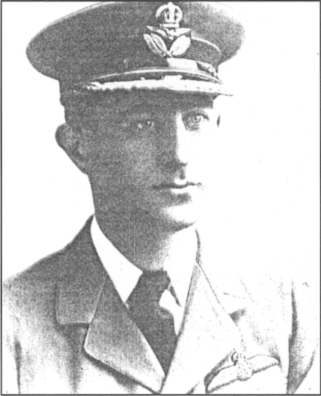
Wing Commander R J Bone RAF, probably taken in late 1918 following his transfer from the RNAS to the RAF. (Mrs R J Bone via Mrs R Horrell)
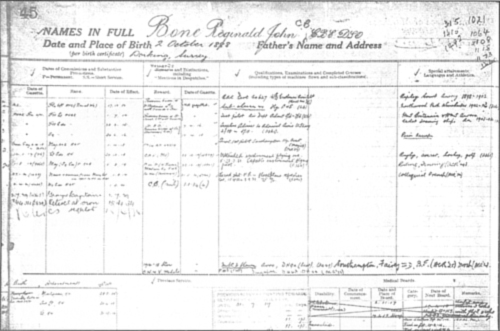
Excerpt from Reggie Bones service record showing his RNAS and RAF service prior to 1934. (Via Mrs R Horrell)

